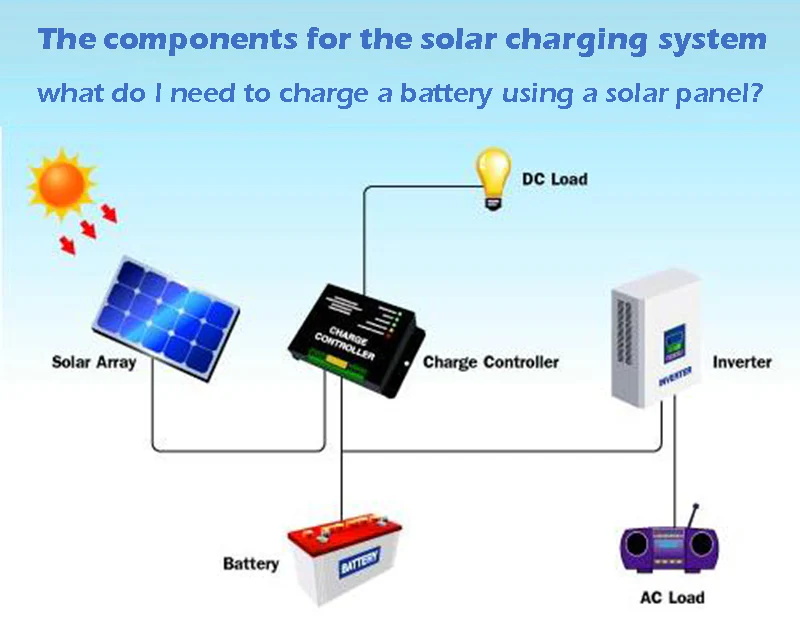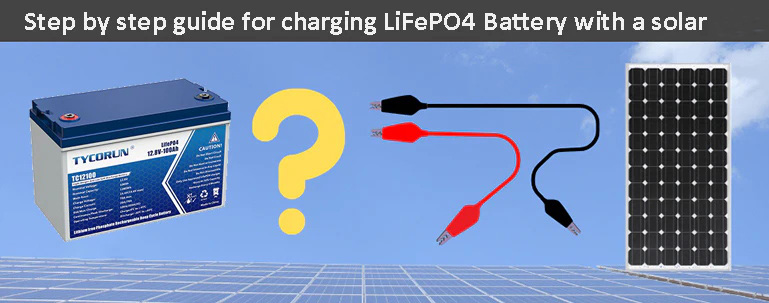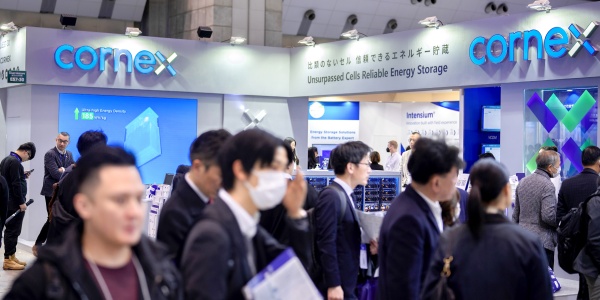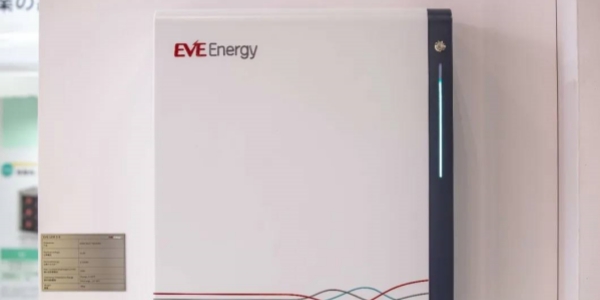Charging LiFePO4 Batteries with Solar: A Complete Guide to Efficient and Safe Charging
In today's sustainable development, new energy is constantly being developed and popularized, solar energy and lithium-ion solar cells as an important part of new energy, have been rapidly developed. One application of solar power that has gained attention is charging LiFePO4 batteries. In this article, we will explore how to charge lifepo4 battery with solar.

About LiFePO4 Batteries
LiFePO4 batteries, or lithium iron phosphate batteries, are a type of rechargeable battery known for their high energy density, long cycle life, and excellent thermal stability. They have become increasingly popular in various applications, including solar energy storage, electric vehicles, and off-grid systems. Compared to traditional lead-acid batteries, LiFePO4 batteries offer higher energy efficiency, faster charging capabilities, and better overall performance.
About the Components for the Solar Charging System
● Solar panel
It is the medium which converts the sunlight energy into the electrical energy.
● Inverter
The devices which need alternating current (AC) to operate can not use the electrical energy direct from the solar panel. As it produces the direct current (DC). So an inverter is needed to convert the direct current into alternating current.
● Charge controller
These are very important components of solar system to charge the battery. These charge controllers such as MPPT are used to identify when the charging is completed. So they will protect it from the risk of being damaged and can also control the charging current voltage in a reasonable range.
● Storage battery
Generally, nickel-metal hydride batteries, nickel-cadmium batteries or lithium batteries. The effect is to store the electricity supplied by the solar cell modules when there is light, and then provide it to the load when needed.

Can You Charge a Lithium Battery Directly from a Solar Panel?
Answer: No!
This is possible to charge a lithium-ion solar battery using a solar panel. But charging LiFePO4 batteries with solar directly can cause some problems. Firstly, there is no system in the solar panel to indicate when the charging gets completed so it can also be overloaded. The battery gets damaged when it is overcharged. Secondly when we charge it directly from a solar panel, we cannot control and monitor whether the charging voltage and current are in the proper range, so it is compulsory to charge it at its optimum voltage.
So How Do You Charging LiFePO4 Batteries With Solar Panels?
The LiFePO4 battery can be charged using a solar panel. When charging lifepo4 batteries with solar panel, you need to use the control chargers that will manage the supply of current and prevent it from overcharging.
Here's a Step-by-Step Guide to Charging LiFePO4 Batteries with Solar Power
Step 1: Assess Your Energy Needs: Determine your energy requirements by calculating the power consumption of your devices or appliances. This will help you determine the battery capacity and solar panel size needed.
Step 2: Determine Solar Panel Requirements: Calculate the solar panel capacity required based on your energy needs and the available sunlight. Consider factors such as geographical location and shading when sizing the solar array.
Step 3: Choose the Right Charge Controller: Select a charge controller designed for LiFePO4 batteries and suitable for the charging current of your solar panels. Ensure it offers features such as overcharge protection, temperature compensation, and load control if needed.
Step 4: Connect the Solar Panels and Charge Controller: Install the solar panels in a suitable location, preferably where they receive maximum sunlight. Connect the panels to the charge controller using appropriately sized cables and connectors, ensuring correct polarity.
Step 5: Connect the Battery Bank: Connect the LiFePO4 battery bank to the charge controller, following the manufacturer's instructions. Ensure proper cable sizing, polarity, and secure connections.
Step 6: Monitor the Charging Process: Regularly monitor the charging process, voltage levels, and system performance. This will help you identify any issues and ensure optimal battery charging.
Step 7: Maintain and Optimize Battery Performance: Follow the manufacturer's recommendations for battery maintenance. Periodically check the battery voltage, clean the solar panels, and inspect the entire system for any signs of damage or wear.

Benefits of Charging LiFePO4 Batteries with Solar
● Reduced Environmental Impact: Charging LiFePO4 batteries with solar power allows you to harness clean and renewable energy, significantly reducing your carbon footprint and environmental impact.
● Cost Savings: Solar power is a free and abundant energy source. By charging LiFePO4 batteries with solar power, you can save on electricity costs and reduce your dependency on the grid.
● Energy Independence: Solar-powered charging systems provide the freedom to operate off-grid, making them ideal for remote locations or emergency backup power.
● Longer Battery Lifespan: LiFePO4 battery cells are designed to withstand numerous charge and discharge cycles. When charged with solar power, they experience gentle and controlled charging, which can extend their overall lifespan.
FAQs
1. What should be noticed when charging a battery with solar safety?
You should keep some safety measure in mind while charging LiFePO4 batteries with solar. You should not come in contact with the damaged part of the solar panel, never try to touch or cut the wiring of solar panel.
2. How long does it take to charge a 100Ah lithium ion battery with solar?
If the solar panel has 100 watts of power and also it is twelve volts it will take 12 sunlight hours to charge the twelve volts 100Ah lithium battery.
3. Can I charge a LiFePO4 with a normal charger?
Charging LiFePO4 batteries need special chargers not regular chargers. Because charging LiFePO4 batteries with solar required at optimum voltage. The normal chargers lack this feature to protect the battery from overcharging.
4. Do you need a charge controller with a LiFePO4 battery?
While charging LiFePO4 batteries with solar panel a charge controller is needed. This will prevent it from overcharging and being damaged.

